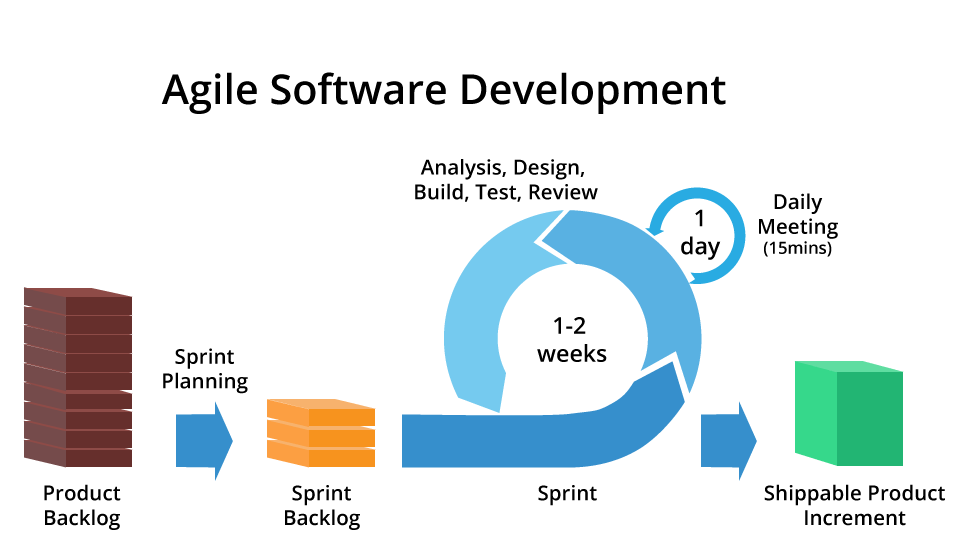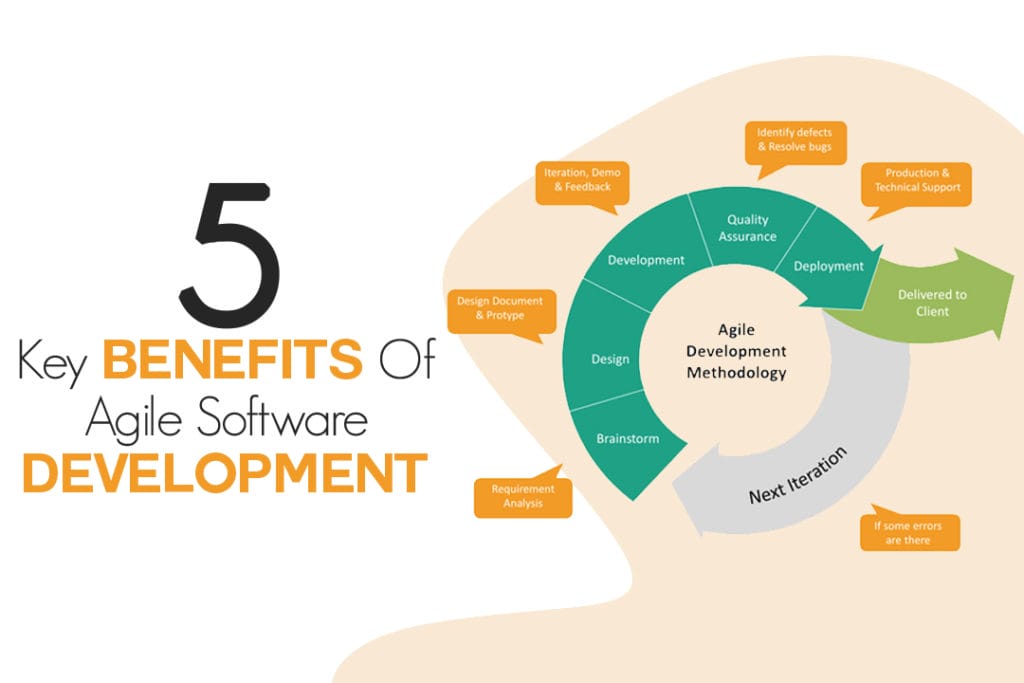Home > Blog > Agile Product Development Best Practices
Agile Product Development Best Practices

Times have changed in the world of product development. Delivery cycles have shortened significantly over the past two decades, so businesses deliver products to market faster and more frequently. To stay competitive, teams need the ability to be highly functional and systematic in their approach to product development – and this has led to a surge in the adoption of agile product development practices.
85.9% of 101,592 surveyed developers use agile processes in some form, and 98% of companies surveyed also found agile adoption helpful. But agile isn’t just a developer’s helpful tool – it’s making companies more money. A recent study found that 60% of companies experienced profit growth after adopting agile.
It’s not enough just to switch to using agile development tactics. Businesses and development teams need to use them right. Let’s look closer at agile product development, its benefits, and the best practices to use when employing on your next cycle.
What is agile product development?
Agile product development is a focused delivery cycle that reduces the timeframe between idea to market release. The implementation of agile involves a series of continuous iterations.
It is customer-focused and built on the framework of gaining user and customer feedback in order to fuel the next product delivery cycle. This shortened timeframe to market also lets businesses conduct a litmus test on their ideas and validate product viability.

The agile method is iteration-based and is quite different from a traditional waterfall approach where a monolithic project is planned, developed, and delivered in sequence and in total. A monolith project is often rigid, takes a significant amount of time to complete, cannot respond to market changes, and is highly reliant on other parts of the project to function. In contrast, agile product development works to deliver a minimal viable product – that is, the smallest working component. Product improvements get iterated based on feedback. This system makes products much more flexible and attuned to market needs.
What are the benefits of agile product development?
Reduced time to market is not the only benefit of employing agile product development. Here are the significant advantages of going agile:
Decreased Level of Risk
The sunk cost of a product or feature that doesn’t take off is the amount of time spent on it. Agile product development requires constant iterations to obtain feedback. This feature gives the business the advantage of market knowledge. It also aids in the ability to refine a product and deliver accurately against observed user needs. The result is functional products delivered at less risk, with constant room for making needed customer-driven improvements.
Increased Product Quality
Agile product development allows teams to execute and deliver a working product in parts. During the time between delivery cycles, feedback can be gathered from the customer. The final product is aligned with reality and eliminates experience pain points for the user.
Increased Customer Satisfaction
Products need to be attuned to the user or customer’s needs to achieve a high satisfaction score and produce a positive experience. Agile product development achieves this by giving users the power to influence the design and enhancements based on feedback between iterations.
Increased Flexibility
Traditionally, all the features and functionalities are planned and penned into the product development plan with no further changes expected. This method can lead to the product being misaligned to market trends and needs. Agile product development increases flexibility by reducing the time to market and allowing products to pivot their features between iterations.

Agile Development Best Practices
Agile product development best practices are a tried and tested collection of ideas that help govern the effectiveness and essence of the framework. Here are eight best practices to create efficiency and effectiveness in your next agile product development cycle:
1. Create the Right Culture
Agile product development requires a level of de-centralization, cross-departmental and self-organizing teams. For agile to be effective, the company culture needs to advocate for proactivity and working collaboratively.
2. You Need a Great Strategy
Methodologies that work are essential, but without the backing of a great strategy, they can lead your agile product development processes astray. A great strategy can unite teams and ensure that the product’s development is aligned to the company’s KPIs and goals.
3. Create Focused User Stories
User stories can encapsulate the requirements of a product from the customer’s perspective. A good user story succinctly captures the context, functionality, and problem it solves. A focused user story precisely captures the feature in a clear and structured sentence. User stories are supplementary to a customer’s journey map, which is a visualized or narrated representation of a user’s journey from discovering your product to its utilization.
4. Communication = Team Building
Miscommunication is rife in projects that don’t have visibility. This results in wasted time, growth of communication chasms, and increased delays for deliverables. Visibility is achieved through tools that facilitate open communication and sharing of knowledge. It also allows for everyone to be on the same page and therefore convey their issues, problems, and potential bottlenecks to the right stakeholders within the team. Clear and open communication is vital with remote teams.
5. Be a Sprinter
A waterfall project can feel like a neverending marathon that drags on. An agile product development cycle works in sprints, releasing deliverables weekly or bi-weekly. Due to the shortened timeframe, the work delivered amounts to hyper-focused products. Proper sprint planning and a prioritized sprint backlog are essential to “winning” your sprint.

6. Regular Delivery Rocks
One sprint does not make an agile product – unless the product fails to deliver the minimum expected results. For products that have market ‘stickability’, multiple and regular sprints result in iterative improvements on a product. There is usually more than one team working on the product for longer sprints, which allows for sequenced and alternating release cycles.
7. Always Provide Value
The purpose of a product is to provide value. Without value, a customer or user has no reason to use it. A valuable product is something that solves a problem. When working with agile products, knowing the value of your product helps you identify issues and solve them. This knowledge can lead to additional discoveries that can add backlog items to subsequent release cycles.
8. Clients Define Your Success
At the heart of every product’s continued existence is the user. This user may come in the form of a customer or client, represented by the product owner. Ultimately, they are the people that utilize and help you monetize your product. Never forget that the agile product development process is centered around the product and its intended service to the client. Their satisfaction is your success.
Develop Agile, Ship Faster
In a world where customers want more and want it faster, agile product development is the logical choice for manufacturers and developers. This iterative process of creating valuable products as quickly as possible requires a team that can employ agile best practices to deliver the goods for customers consistently. By following these best practices, your agile team ensures its ability to create valuable and successful products.
Efficiency-enabling tools assist the most effective agile product development teams. Agile product management tools like craft.io help teams collaborate, strategize, and execute on the delivery of high-quality products that satisfy customers. Centralizing and simplifying your team’s agile development process will help you become agile – and ship that product faster.


